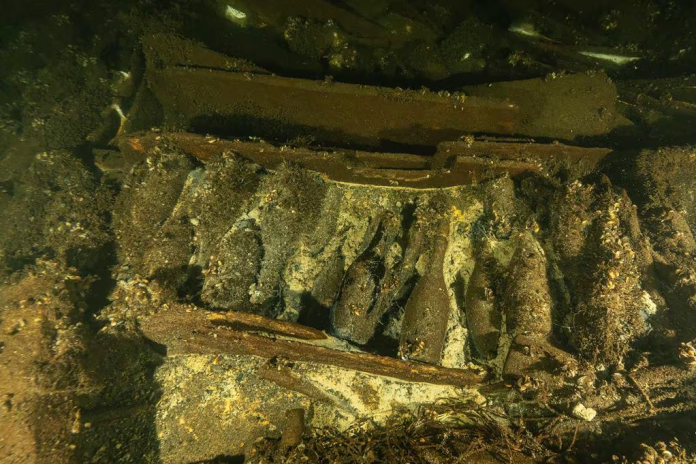No one will be permitted to fish out the nearly 100 bottles of 19th century Champagne and mineral water in a shipwreck off southern Sweden without proper authorisation, according to AP News.
Although the wreck’s location has been known since 2016 and registered with Sweden’s National Antiquities Office’s cultural environment, Polish divers discovered the treasure cargo only on 11 July.
The ship wreck, which is about 58 metres (190 feet) deep off the coast of the southern Swedish county of Blekinge, was discovered by divers as they were inspecting locations of interest about 37 kilometres south of the Swedish island of Öland in the Baltic Sea.
According to the leader of the wreck divers Tomasz Stachura, wine and water experts swiftly contacted the divers and proceeded to run laboratory tests on the bottles’ contents. However, Swedish authorities took a firm stance and labelled the wreck “an ancient relic,” which the county stated required “a clear and strong protection” to remain intact. Magnus Johansson, a county official, said on Wednesday:
You must not damage the ancient remains, which also includes taking items from the wreck, e.g. champagne bottles, without permission from the county. The champagne bottles are a fantastically well-preserved find that gives us a snapshot of shipping and life on board at the end of the 19th century.
If the wreckage predates 1850, it would automatically be listed as an ancient relic, local authorities announced. Daniel Tedenlind, a county official in neighbouring Kalmar, stated:
But we have established that the cultural and historical values of the wreck were so high that it should be declared as an ancient relic.
Previously, Stachura said the cargo might have been on its way to the royal table in Stockholm or to the Russian Tsar’s residence in St Petersburg when the ship sank sometime in the second half of the 19th century.
